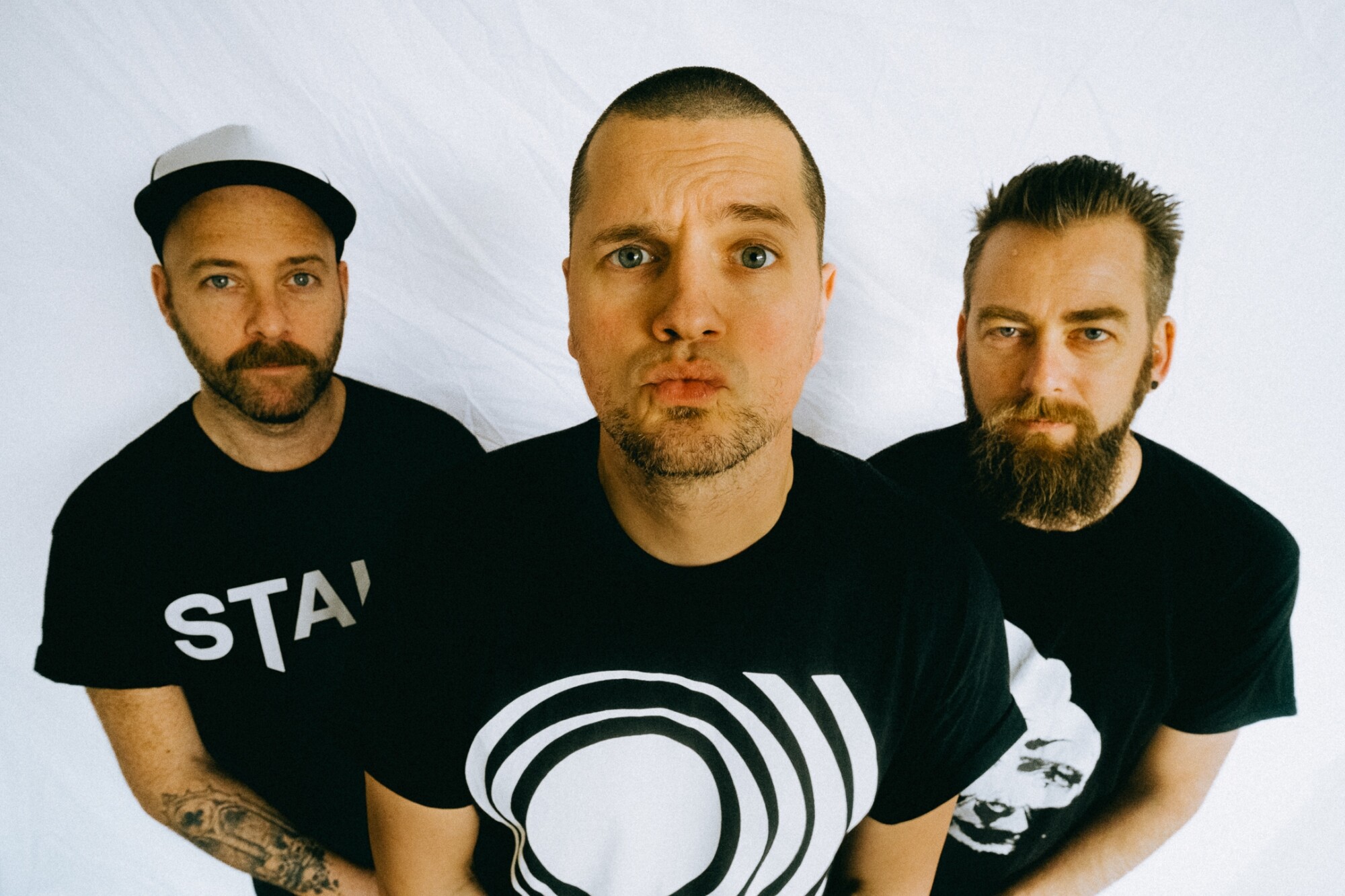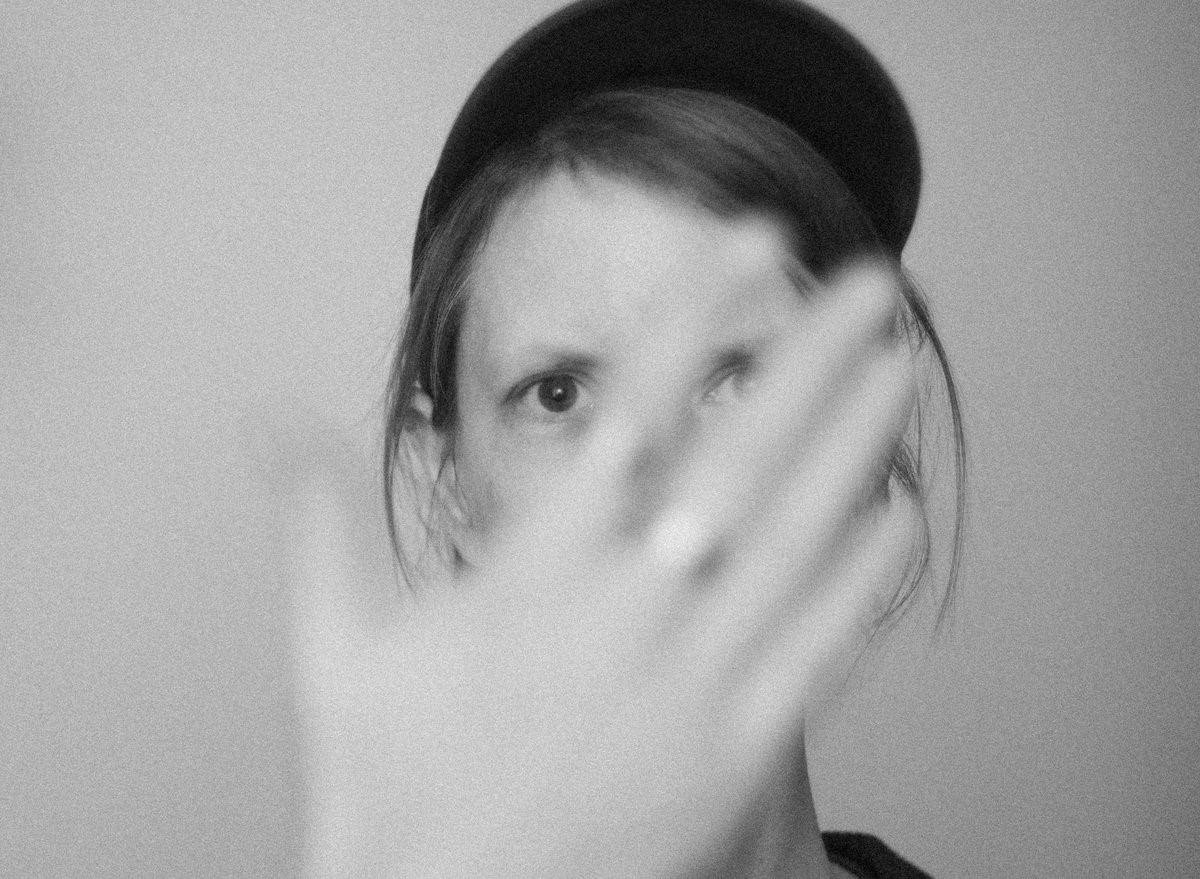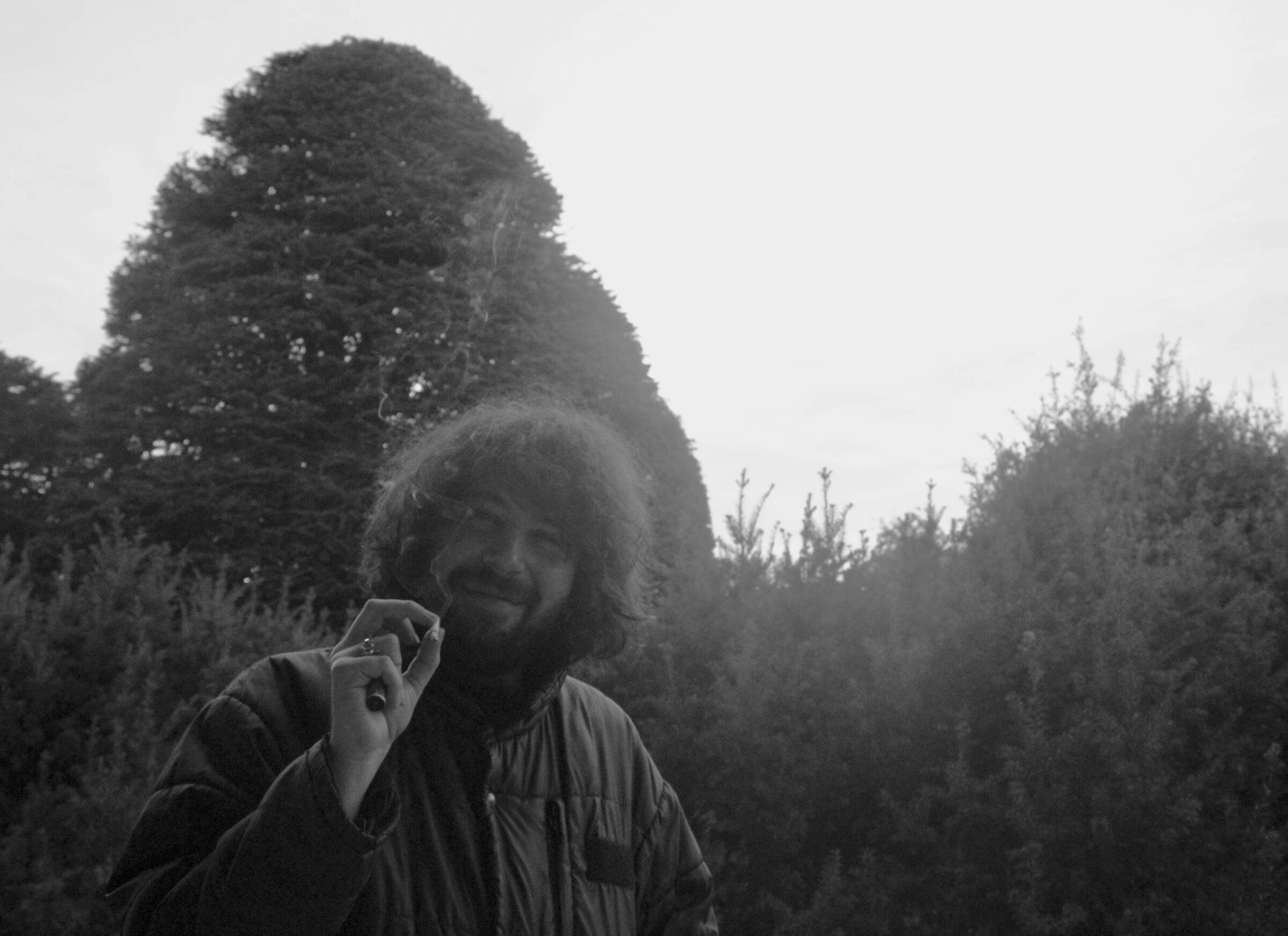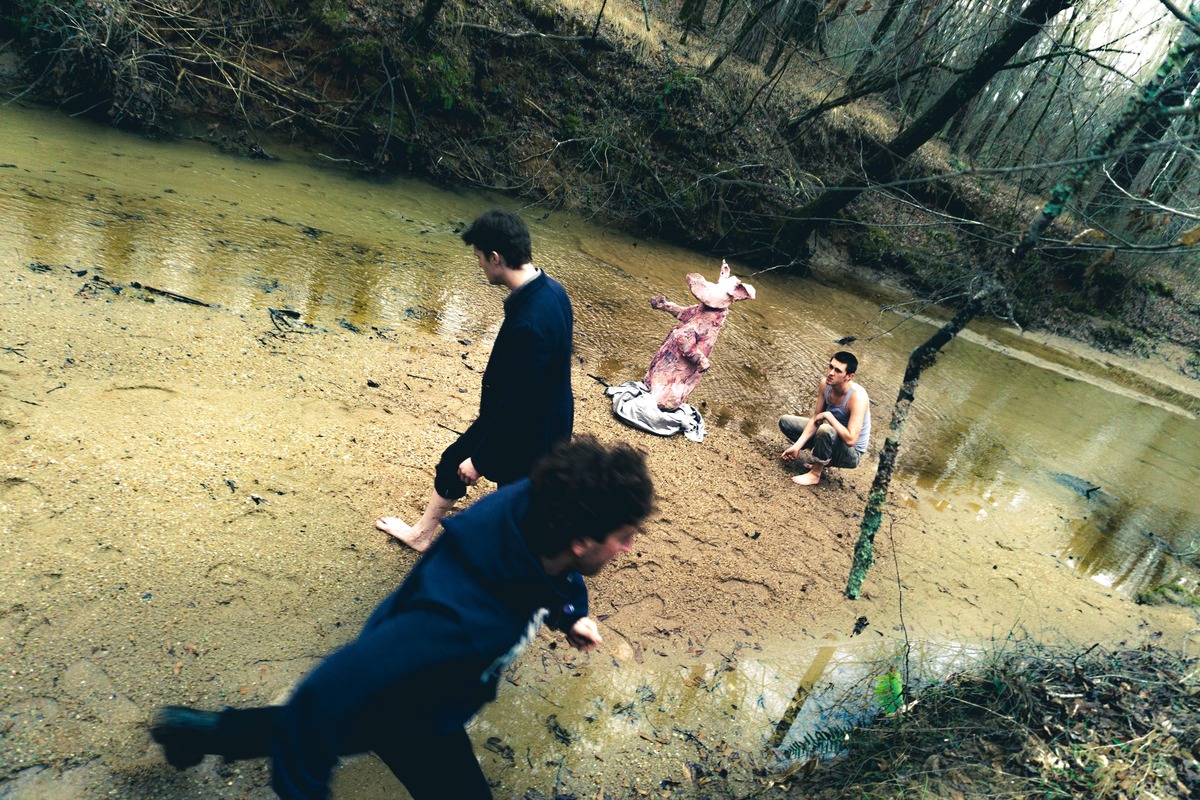‘Wave Cannon’ by The Machine | Interview | New Album, ‘Wave Cannon’
Exclusive video premiere of ‘Wave Cannon’ by The Machine, taken from the upcoming album, ‘Wave Cannon,’ out May 12th, 2023 via Majestic Mountain Records.
Originally formed in 2007, Dordrecht’s The Machine returns this May with a reinvigorated sense of purpose that finds them stepping back from the noise rock-centred influence of their 2018 album Faceshift, to take cues from the heavier sides of shoegaze, progressive rock, and psychedelia.
“It’s no coincidence that our new song is also the first track on Wave Cannon,” explains guitarist/vocalist David Eering. “It sets the tone for the rest of the album and has a mellower, old-school-Machine vibe, but even better with more attention to melody. The video is a visual interpretation of the music too, which focuses on the important things in life. But backwards. I suppose you just have to watch it.”
“Although I don’t have a favorite track on ‘Wave Cannon,’ if I have to make a choice the title track will probably be the one. It has a very pleasing, in The Machine jargon, “hang” in the groove and a melodic laidback vocal delivery. This makes it so much fun to play and sing. There’s an ear worm of a melody in the solo just before we kick it into a spaced out noise galore ending. Simply can’t go wrong right? For the video we opted for a more minimalistic but aesthetically pleasing approach. Being a photography enthusiast, I shot the video in my preferred black and white style. Hope you like it!” David Eering
‘Wave Cannon’ also marks the trio’s first outing with new bass player Chris Both whose skilful presence contributes a refreshing and powerful swagger to the trademark, punishing guitar play of Eering’s guitar work. Produced by Eering himself and mastered by fellow Dutchman; sonic wizard and legendary producer Pieter Kloos (Motorpsycho, The Devil’s Blood, DOOL).
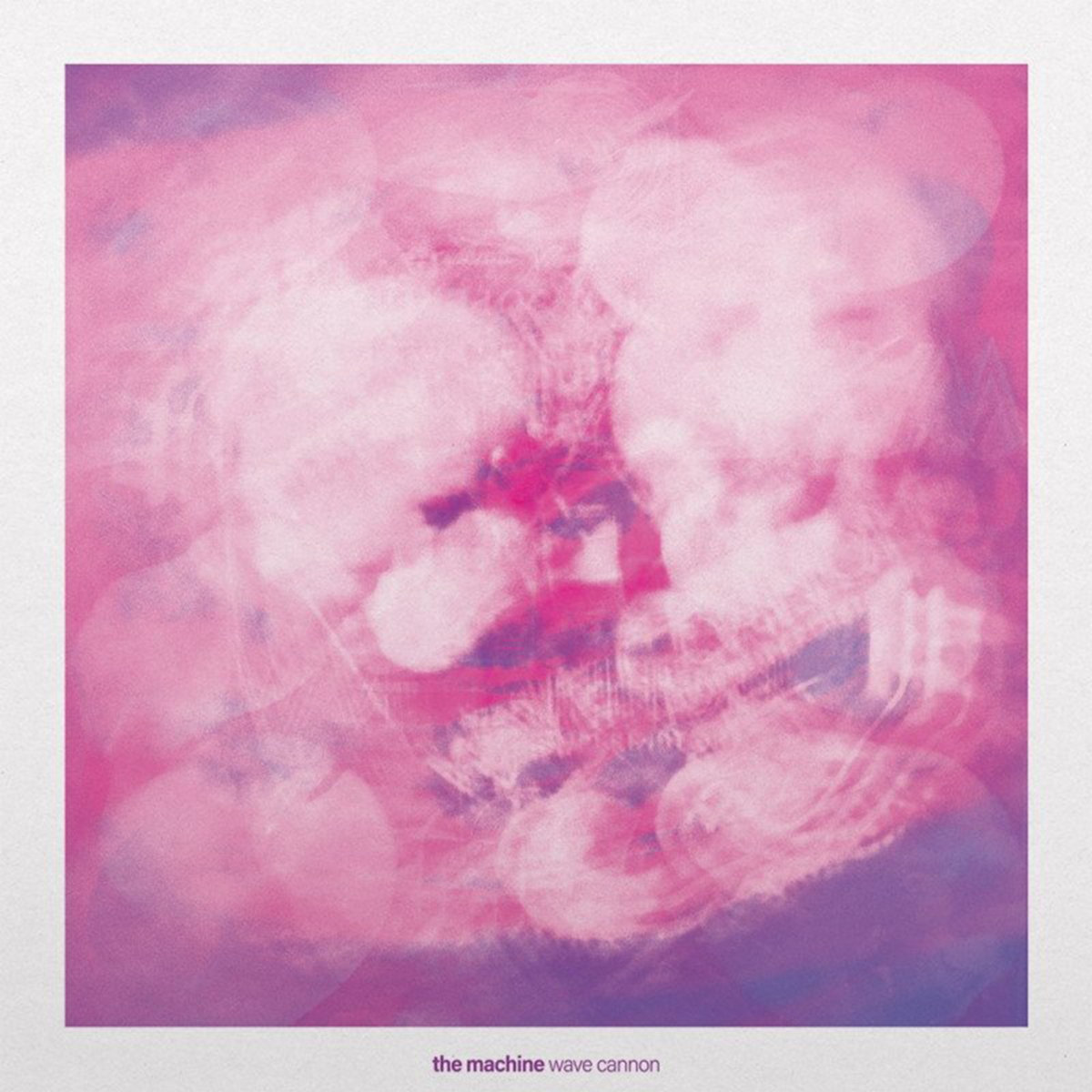
“The Machine is about as DIY as it can”
It’s fantastic to have you. How much work went into your upcoming album? Have you found the recent isolation creatively challenging or freeing?
David Eering: Well thanks for having me, Klemen, again! Just had to look it up; 2011 was the previous time we did this. It’s probably safe to say we’re officially not super young anymore. But let’s talk about ‘Wave Cannon’ indeed. In the end, quite some work went into the album. Production wise not more than we’re used to, but the writing process was a bit different. I had some rough ideas ready earlier, but the three of us started writing for a new albumin January/February 2020. Two months later shit hit the fan and we found ourselves in the first lockdown. Which precisely had zero effect on my personal creativity, can’t speak for the other guys though.
Anyway, the lack of live shows (a handful of in-between-lockdowns shows aside) gave us enough time to craft these songs. A lot of ideas were thrown aside in the process and we took our time to make sure that we were happy with all of our output. It’s the first album with Chris on bass and his approach to the instrument offered the band and me as a guitar player the chance to re-evaluate our sound. Vocals wise, I’ve never paid this much attention to phrasing, melodies and delivery as on ‘Wave Cannon’. Eventually we recorded the album over the course of a couple of months, tracking the live basics and most of the overdubs during the summer of 2021. Vocals were recorded mostly in late 2021 and early 2022, as well as some additional overdubs. In addition to mixing and mastering, I had to do the artwork, look for a record label, schedule a lot of things, shoot music videos, do a promotional photoshoot, et cetera. In that sense I’d say we’re actually a punk band, or at least what punk means to me: The Machine is about as DIY as it can get and we have maximum control over all outings. I single handedly take care of almost all aspects that come into play as a band. So that’s the most fun and satisfying to me actually: releasing an album means I get to do everything from writing the songs to the final stuff like promotional music videos and the business side of things. And as said, the periods in isolation didn’t really have an impact. Our rehearsal space had to close a few times because of the government regulations, but we were lucky enough to have another space to fall back on. We did a lot of self-testing and social distancing in that period. So, any impact of the isolation was more of a practical nature than that it influenced my creativity. I actually love working as a solitary caveman, that probably helps.
Your previous album, ‘Faceshift’ was released five years ago, what caused the longer gap?
First of all: the gaps were pretty short in our earlier days because we had more time on our hands. Besides that, we took just a handful of riffs and a dozen of10 minute guitar solos, put them in an alternating order, recorded two improvised jams to boot and called it an album, haha. All kidding aside though, the increased focus on songwriting instead of long partially instrumental songs automatically required more time. This has been a transition within the band ever since we released ‘Drie’ in late 2010.Then the practical part of the answer to your question. Our previous bass player Hans left the band in early 2018, right after we recorded and mixed ‘Faceshift’. Having this major change (we’d been the band with those three people for over 10 years by then) initially initiated a pause on several things. After having decided that this would not be the end of The Machine, we then had Sander Haagmans (ex-Sungrazer, Whims Of The Great Magnet) join us for a couple of months to play the shows we already committed to and do an absolute minimum of live promotion in support of the record. This automatically meant that we had to focus on a live set with a new member and just concerned ourselves with rehearsals and a handful of shows. The actual release of ‘Faceshift’ more or less became an afterthought at that point, I also started my own imprint Awe Records just to get it over with and save ourselves the search for a fitting label while we were uncertain about the future of the band. But it was an interesting time and it was fun to have a longtime friend join us for a little while.
Another longtime friend of the band then came into the equation. Chris replaced Sander on a permanent basis in late 2018, which required us to focus (again) on getting a live set rehearsed and go through our back catalog to have a number of spare songs available to fall back on, in addition to becoming a tighter live act and work on our chemistry as a reinvigorated band. After a tour in the fall of 2019,we started talking about dedicating ourselves to writing a new record. As already said, the writing process as a band began early 2020. The lockdowns that followed and the resulting live show inactivity automatically had us finetune the songs quite a lot. We then just took our time. Having a lot of patience is not in my nature as far as creating new things are concerned, so I had to force myself to just ride the wave and let things be. But I think it paid off in the end. I can promise you that a follow-up to ‘Wave Cannon’ will not take another five years though!
Would you be able to draw some parallels between the two albums?
Just musically, not really. Every The Machine is different from the preceding one, but with ‘Faceshift,’ in hindsight, I probably pushed it a bit too far because I already had the feeling it was time for some sort of a change for the band. It’s a pretty aggressive album overall, at least to our standard, with a lot of angular rhythms and riffs taking cues from my love for 90s noise rock. A bit stripped down and in your face. These stylistic choices were maybe not the most fitting ones at the time. But the album is representative of that specific (and in general laborious) period of the band. ‘Wave Cannon’ on the other hand, is maybe more a return to form but with a modern approach. Its overall vibe is definitely more mellow in comparison to the predecessor while we dabble in our heavy psych roots. Chris’ bass style also fills the gaps more when I stop riffing, offering me the chance to play more intricate parts without having the feeling that the card house is collapsing. I think ‘Wave Cannon’ is the perfect marriage between obviously moving forward as a band and respecting your past and identity, without pausing the ever-ongoing evolution of The Machine. A parallel could be that ‘Faceshift’ was a more drastic move into another musical direction, whereas ‘Wave Cannon’ more or less does the same if you compare it to ‘Faceshift’.
What both ‘Faceshift’ and ‘Wave Cannon’ absolutely do have in common though, is that they both have proven to be transitional documents in the history of this band. Hans (bass) left the band between the recordings and the release of ‘Faceshift,’ Davy (drums) did the same with ‘Wave Cannon’ a couple of years later. He’s still on the album but was replaced with Klaas as of 2023.So, we basically shifted into a new phase!
Let’s talk about gear, amps, effects and pedals you’re using these days?
Haha, oh boy… will try to not elaborate too much now. But yeah, gear plays an important role in The Machine. These days are already different from what was used on the recordings though. ‘Wave Cannon’ is the first album that was recorded with my aluminum neck guitars. I acquired my first neck (EGC) right after ‘Faceshift’ and installed it on a telecaster. Being hooked with the characteristics of an aluminum neck, I then got two from Alef (Tel Aviv, Israel) to fit on a jazzmaster body. The Alef headstock is more elegant in comparison to the EGC one and more fitting to the contour of a jazzmaster body. I more or less built my two main guitars myself, bought all parts separately and assembled them into working guitars, from the electronics to the hardware components to the paint job of the body. The body was already carved out to Fender specs when I bought it. One is a transparent shade of green, the other one is a transparent ebony-brownish one matching the color of my speaker cabs. I wanted to make guitars with the best components available, they’re so called “jazzblasters,” inspired by the jazzmasters of Lee Ranaldo and Thurston Moore (Sonic Youth). Like some of Ranaldo’s guitars, they are equipped with wide range humbuckers (made to vintage 70s Fender specs by a UK boutique company called Catswhisker) and without all the other additional switches and options usually found on a jazzmaster. The WR humbuckers give you a single coil twang with the punch and body of a humbucker. And the, well, reduced hum. Bridge and vibrato-system are by Mastery.
Amp wise, I used a vintage silver face Fender Twin Reverb and my good old trusty vintage Ampeg V4B. Right after the recordings, I put the amp of the Fender combo in a head shell so I could use it with my 2×15 cab. The V4B is connected to a 4×12. I use custom cabs, also built by me. The construction and dimensions were based on a Matamp 4×12 I used to own, but with the transparent finish like Emperor cabs. Those are also basically an Orange/Matamp based design to begin with. The Twin Reverb was recently put to rest and I instead took my old TubeWorks head out of storage for now.
Pedals, yes pedals, yes. A lot of them. What I can say is that I use an overdrive with little breakup as my “clean” sound, at the moment this is an always on JHS Morning Glory. Again, already different from what was used on Wave Cannon. I stack this with a fuzz of some sorts. On Wave Cannon, I used a Caroline Guitar Company distortion called the ‘Wave Cannon’. Aha! Yes there you go, we basically named the album after this pedal. Simply because to us, the name of the pedal also perfectly captured our perception of the album; if flows and you hang into the grooves like riding on a wave, only to be shot away a moment later with a very loud bang. Like a cannon. It just made sense. I’ll probably try the WC back on my board and see how it matches with the current pedals and the new amp setup. The quest is part of the fun right? In addition to this, my board consists of a wah, volume pedal, couple of modulation pedals, a couple of delays, octavio, reverb-ish pedals, et cetera.
Chris plays a custom 4×10/1×15 cab, also built by me and with the same look as my cabs. His current amp is a rare 90sAmpeg SVT-200T, solid state but mega tube-like and super punchy. Guitar wise, he uses two Fender Precision basses and we’re currently experimenting with dirt pedals for an update of the sound. Looks like a combination of Xotic pedals is currently in the winning position! He has a volume pedal and a delay as well.
Klaas uses a clear acrylic DrumCraft kit (24”/12”/16”), a Gretsch 14” wooden snare and Meinl cymbals (15” hihats, 19” & 20” crash, 22” ride and 20” trash crash).
“What is typical of The Machine is the connection between drum and guitar parts and accents that are being integrated back and forth”
Where was the album recorded?
The album was recorded and produced by me. We used the same location as with all previous albums: a large attic consisting of one big live room with adjoining bedrooms which are being put to use as isolation rooms for the cabs. It’s in the house of my girlfriend’s parents. Being in the countryside, with the next house (actually it’s a farm) being as close as at least 500m, we can make a lot of noise without being a burden to anyone. We are very lucky with this location and the freedom we have there. Aside from having the possibility to build a studio whenever we have an album to record, it’s also a perfect setting for relaxed BBQ’s and hangs outside with a magnificent view. Anyway, we set up our own mic collection and other hardware components and recorded live with the three of us together. In addition to it being a fun process, this also gives us maximum comfort with regards to time restraints (there aren’t any) and thus budget challenges (there aren’t any). The majority of the recordings were done here, which basically means drums, bass and electric guitars. We always try to track as much as possible live, but in the end this usually means that we strive to get at least a good live drum take, everything else is a bonus.
Chris had his parts down almost immediately during the live tracking, we did little overdubs for bass. Just one or two minor things that could benefit from another take and we added an ambient drone-y part in the middle section of ‘Return to Sphere’. I ended up re-tracking all guitar parts, because I wanted to have the guitar blasting in the live room where we record the drums and record with a room mic too. The rooms where the guitar and bass cabs are during live tracking are pretty dead. Most of the vocals were recorded in Elektra, a live music club where we also have our rehearsal space. We actually rehearse right in front of the stage, where the audience would be during a show. This is where I set up the mics and recorded probably 75% of the vocals. The rest was recorded at my home; some vocals and additional overdubs.
Can you share some further words about the writing, recording and production process for the latest album?
The writing was well underway before our actual rehearsal space had to be closed again due to another lockdown. We luckily found another space nearby where we were able to do our thing while our own place was shut down, not having our own complete backline with us but it was sufficient enough to work on our new songs. I believe we wrote ‘Reversion,’ ‘Glider’ and ‘Ride On Crash Kick’ there. We always get the instrumentals down first, I write lyrics afterwards. Some of the vocal melodies were already in place while working on the instrumental basics. We also recorded another song that did not make it to the final album, we would have too much material to fit on a single record and decided to drop this one. It was the first song we worked on post-‘Faceshift’ and was also the most odd one out stylistically. Maybe it will see the light of day at one point, but most likely not. We’ll probably be recycling its chorus into a new song at the moment, haha. It has quite a Jesus Lizard vibe in the verse part, most probably a remainder of the ‘Faceshift’ period.
We put the final recordings a bit to rest due to holidays, other commitments and pending vocal recordings. I ended up re-writing and re-recording my vocal parts for ‘Return to Sphere’ in my home studio after I was unsatisfied with the parts and recordings at Elektra. I had just bought a Danelectro 12-string electric guitar which turned out to be super fitting for the vibe of’ ‘Reversion’ so I recorded an overdub with that one. Layered and buried under the rest of the track it gives a slight eastern touch. ‘Wave Cannon’ could benefit from a percussive acoustic guitar track stacked underneath, so I recorded that at home too.
Once I mixed everything, I sent it over to Pieter Kloos (Motorpsycho, DOOL, 35007, The Devil’s Blood, …) because I wanted a third party to take care of the mastering process. He did a great job and works super-fast for a very fair price. Can’t recommend him enough actually.
How do you usually approach music making? Do you feel that approach has changed since we last talked a couple of years ago?
Yes, the approach changed significantly. In the early years (we released ‘Drie’ when doing our previous interview) we were more into jamming and instrumental long-form tracks. This gradually changed into a more song-based approach. I also started to prefer more clever songwriting with non-cliché melodies over the 10 minute guitar solos at one point to be honest. It’s become more interesting and satisfying to work on an actual song than to put a couple of riffs in a specific order and then run off on those in an instrumental section. But to be fair, this mindset became a bit more appealing again recently. We just approach it differently and more thought out. When you look at ‘Return to Sphere’ on ‘Wave Cannon,’ there are hints of this. But it’s rhythmically more interesting and the solo is composed pre-recordings and not improvised during the recordings with then becoming the way to play it live afterwards.
It remains fun to also just jam during rehearsals while working on new ideas. But instead of sticking to what happened in the jam and calling it a song, we take parts out of it that work and write a song around it. Or use it in another song that could benefit from the addition.
Are any of you involved in any other bands or do you have any active side-projects going on at this point?
Chris (bass, 2018) plays guitar in Sepiroth, his own death metal band since forever. He’s a skilled player and we seriously benefit in The Machine from his 20+ years of super tight guitar work. He’s also as nitpicky as I am on this topic (several other ones too) which makes discussions easy.
Klaas (drums, 2023) used to be active in BUG, a 90s fuzz/punk/rock trio from Amsterdam but left when he joined The Machine. He currently also drums with Sunday Kids, a southern psych roots rock band.
This group was my first serious band and is still my only band. I’ve had very low-keyplans for several solo projects (a jazz rock band, a hardcore punk band, an ambient album, acoustic song-songs, a crushing more metallic project, et cetera) throughout the years but that’ll not happen anytime soon. Since we’re not a full time band, a lot of the time I have available goes into this band and all the other creative and business stuff that comes with being a band. The multi-disciplinary nature of having this band makes it as satisfying as it is and to me personally is the only way to do it when running a band. It would be fun to be part of another project for a while, but preferably not on guitar but as a bass player or on drums.
What are some future plans?
Well, with Klaas joining us quite recently; we’ve been working on becoming a tight and stage-ready band and having him absorb a part of our back catalogs we have a set of songs to present live. Like we did with Chris 5 years ago. In the very near future, the plan is to release ‘Wave Cannon’ on May 12. Prior to the release, we’ll be doing a short run of shows supporting King Buffalo as well. There are a couple of other dates and festivals in our schedule too, we now have 14 shows planned for May and June, some things are being scheduled by our booking agency Sound Of Liberation for the second half of this year. Once this string of shows in Spring is behind us, we will start working on new material. The current phase of the band feels a bit like a fresh start to me, so who knows what the future will bring. As long as we’re able to play cool shows at nice venues, bore everyone with our terrible jokes and create new music I’m happy. It’s about time that we re-introduce ourselves!
“It shifts from being influenced to being inspired at one point”
What are some of the most important players that influenced your own style and what in particular did they employ in their playing that you liked?
I almost never dwell on stuff like this, but it’s an interesting question. Being influenced is logical, especially when you’re still very young. In my case, I think I took a couple of things from a couple of guitar players and made them my own, integrated those things into what became my own style. Hendrix is at the top of the list though, the Band of Gypsys album is the main reason I decided to pick up a guitar. The combination of rhythmic guitar work, top notch soloing and noise/feedback experiment but with utter control. Superb. With a super tight and funky rhythm section to boot, without the gimmicky acrobatics he had become known for at the time. After that, Ritchie Blackmore was important (relatively experimental and high speed non-standard bluesy stuff to 70s standards), Frank Zappa (underrated as a guitar player, love his timing and “odd” note choices) and Josh Homme (sound wise and, again, “odd” choice of notes and also percussive riffing) to name a few. And Nirvana, just the entire band and everything around it. No further clarification needed, I guess. A bit later I got more and more into the more experimental stuff, Thurston Moore for instance is inspiring with the alternate tunings and chord choices, like Kevin Shields is inspiring too in a completely different way.
Point is: it shifts from being influenced to being inspired at one point, at least for me. I also don’t want to stick to just guitar or one instrument as a source of inspiration. Miles Davis and especially his electrical period had a huge impact on me, same with drummers like John Bonham and Dave Grohl very early on. What is typical of The Machine is the connection between drum and guitar parts and accents that are being integrated back and forth, so I always write with drums in mind. Motorpsycho is quite inspiring too, Sæther & Ryan have been around for so long and always do as they please stylistically and keep things interesting. They lost me a bit with the later run of albums, but ‘Little Lucid Moments’ is a personal highlight. Stuff like The Psychic Paramount was also very inspiring, Niko of Seven That Spells introduced me to them. Their album ‘II’ is so good, but it’s an acquired taste I experienced after trying to convert other people too. There is so much good and inspiring stuff to me, just like there is a lot of boring rubbish.
Let’s end this interview with some of your favourite albums. Have you found something new lately you would like to recommend to our readers?
Sure!
Jimi Hendrix – ‘Band of Gypsys’
Nirvana – ‘Nevermind’ (my first CD in the 90s, prefer ‘In Utero’ in the meantime)
Miles David –’Bitches Brew’
Bad Brains – ‘Bad Brains’
Deep Purple – ‘Made in Europe’ (seriously, this Mk3 lineup rocks so hard)
Kyuss – ‘And the Circus Leaves Town’ (trumps the other ones in terms of heaviness)
QOTSA – ‘QOTSA’
Motorpsycho – ‘Little Lucid Moments’
The Psychic Paramount – ‘II’
My Bloody Valentine –’Loveless’
I could list a hundred more but decided to stick to a short list that was the most formative and in the light of this interview, haha. Left out a lot of (black) metal, 90s indie, noise rock, hip hop, jazz, classical, prog, punk, psych, garage, …
Not necessarily new, but there’s a, let’s call it psychedelic noise, band from Austin called Cherubs. I never really got into their 90s stuff. They broke up in 1994 but got back together in 2014. Their first new outing was ‘2 YNFYNYTY’ and they somehow were picked up by Relapse Record subsequently who released their latest album ‘Immaculada High’ in 2019. I absolutely love those two more recent records and they’re quite inspiring. Their whole attitude also seems to match one of the core elements of The Machine: take making music seriously but yourself not so much.
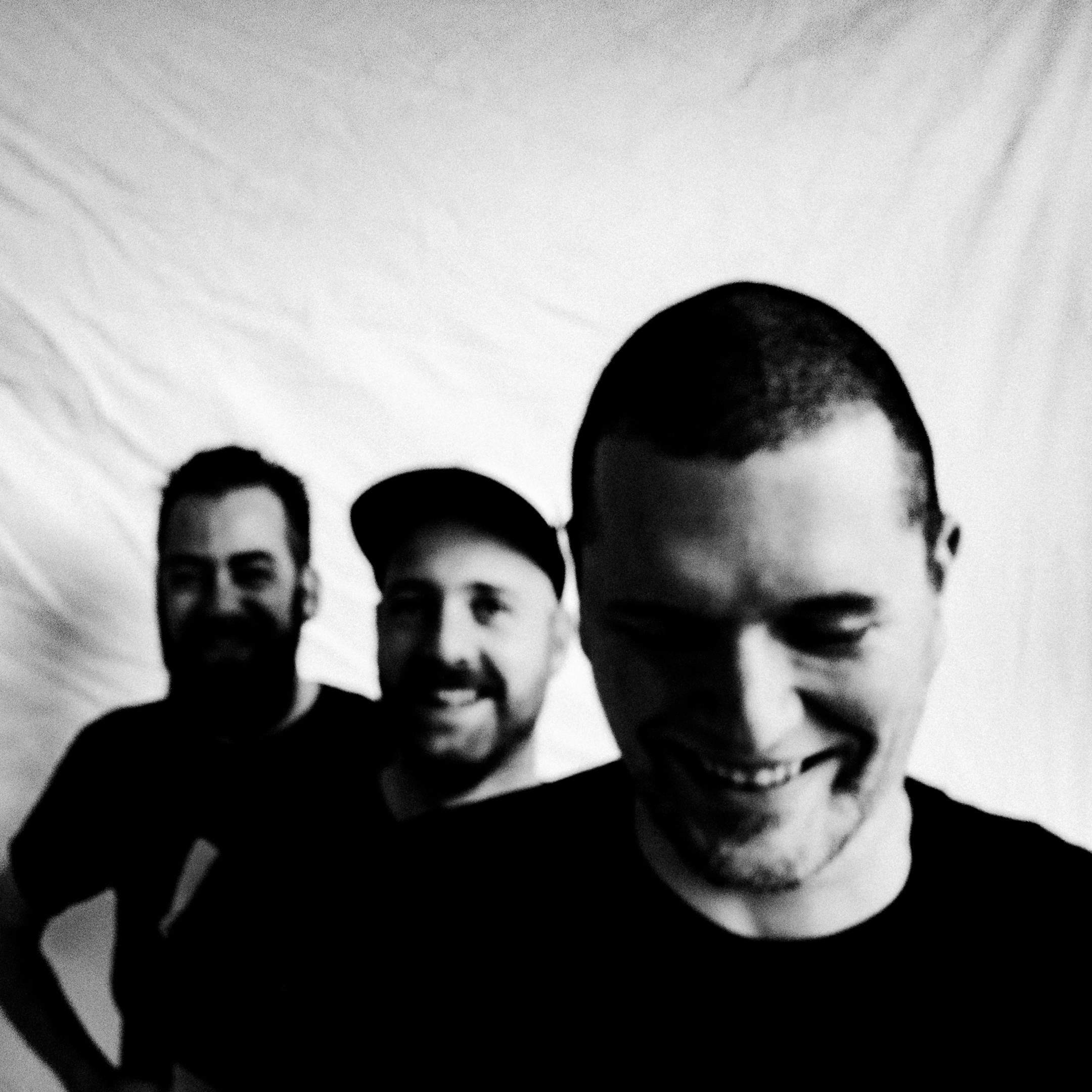
Thank you. Last word is yours.
Thanks for having me. Maybe do this again in, let’s say, 12 years?
Klemen Breznikar
The Machine Official Website / Facebook / Instagram / Bandcamp / Bigcartel / YouTube
Majestic Mountain Records Facebook / Instagram / Twitter / Bandcamp / YouTube / Bigcartel
The Machine interview David Eering & Hans van Heemst

